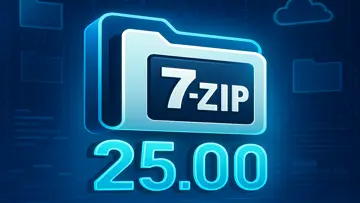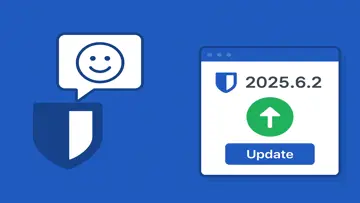Covalent Bonding: Simplifying Chemistry Education
Covalent Bonding by Raylec Software offers an interactive and user-friendly platform for students to explore the nuances of covalent compounds and chemical bonding concepts.
Covalent Bonding by Raylec Software is a powerful tool designed for chemists, researchers, and students to visualize and analyze molecular structures with ease and precision.
With Covalent Bonding, users can quickly build, edit, and manipulate complex molecules in 3D. The intuitive interface allows for seamless creation of single, double, and triple bonds, as well as lone pairs, helping users to accurately represent molecular structures.
One of the standout features of Covalent Bonding is its extensive database of elements and compounds, ensuring that users have access to a wide range of atoms and molecules to work with. This database not only includes common elements but also rare and complex ones, making it a comprehensive tool for chemistry enthusiasts.
Furthermore, Covalent Bonding offers advanced visualization tools such as bond length and angle measurements, as well as electrostatic surface potential mapping. These features enable users to gain insights into the properties and behavior of molecules, aiding in research and analysis.
Whether you are a student learning about chemical bonding or a professional in the field of chemistry, Covalent Bonding provides a versatile platform for creating and exploring molecular structures with precision and accuracy.
Overview
Covalent Bonding is a Commercial software in the category Education developed by Raylec Software.
The latest version of Covalent Bonding is 1.0, released on 02/18/2008. It was initially added to our database on 08/25/2007.
Covalent Bonding runs on the following operating systems: Windows.
Covalent Bonding has not been rated by our users yet.
Pros
- Easy to use interface for creating and visualizing covalent bonds
- Includes a wide range of elements and compounds for creating realistic models
- Provides detailed information on bond lengths, angles, and energies
- Allows for customization of bond properties and visualization options
Cons
- Limited advanced features compared to other professional molecular modeling software
- May not offer advanced simulation capabilities for complex chemical reactions
- Potential for bugs or glitches in the software that could impact usability
FAQ
What is covalent bonding?
Covalent bonding is a type of chemical bonding where atoms share their outermost electrons to form stable molecules.
How does covalent bonding differ from ionic bonding?
In covalent bonding, electrons are shared between atoms, whereas in ionic bonding, electrons are transferred from one atom to another.
What are the properties of covalent compounds?
Covalent compounds usually have low melting and boiling points, tend to be gases, liquids, or soft solids, and do not conduct electricity in their pure form.
What are the examples of covalent compounds?
Some examples of covalent compounds include water (H2O), carbon dioxide (CO2), methane (CH4), and ammonia (NH3).
Can covalent bonds form between different elements or only within the same element?
Covalent bonds can form both between different elements and within the same element. However, the number and types of bonds formed may vary.
What is a double bond in covalent bonding?
A double bond is a type of covalent bond where two pairs of electrons are shared between two atoms.
What is an electron pair in covalent bonding?
An electron pair refers to a pair of electrons that are shared between two atoms in a covalent bond.
How do you determine the number of covalent bonds an atom can form?
The number of covalent bonds an atom can form is generally determined by its valence electrons. The octet rule is often applied to guide the formation of stable covalent bonds.
What is electronegativity in covalent bonding?
Electronegativity is a measure of an atom's ability to attract electrons in a covalent bond. It helps determine the polarity of the bond.
Are covalent bonds stronger or weaker than ionic bonds?
Covalent bonds are generally stronger than ionic bonds due to the sharing of electrons between atoms.

Pete Milner
I'm Pete, a software reviewer at UpdateStar with a passion for the ever-evolving world of technology. My background in engineering gives me a unique insight into the intricacies of software, allowing me to provide in-depth, knowledgeable reviews and analyses. Whether it's the newest software releases, tech innovations, or the latest trends, I'm here to break it all down for you. I work from UpdateStar’s Berlin main office.
Latest Reviews by Pete Milner
- Helper-Saturator: A Promising Tool for Saturation Enhancement
- Synaptics WBF Fingerprint Reader Drivers Offer Enhanced Security Features
- Comprehensive Chess Learning and Playing Platform with Robert Ris’s Vienna Game Module
- Hone by AuraSide Inc: An Insightful Review
- Win USB Display by MS: An Efficient Portable Screen Solution
Latest Reviews
|
|
Intel(R) Dynamic Tuning Technology
Intel's Dynamic Tuning Technology Optimizes Performance and Efficiency |
|
Native Instruments Una Corda
Native Instruments Una Corda: A Unique Sample Library for Soft Piano Tones |
|
|
Hybrid Mark Knight Expansion
Hybrid Mark Knight Expansion by AIR Music Tech GmbH Review |
|
|
Helper-Equalizer
Helper-Equalizer: Versatile Audio Tool for Custom Sound Tuning |
|
|
Helper-Saturator
Helper-Saturator: A Promising Tool for Saturation Enhancement |
|
|
Ravage Lite
Ravage Lite: A Lightweight Audio Enhancement App |
|
|
UpdateStar Premium Edition
Keeping Your Software Updated Has Never Been Easier with UpdateStar Premium Edition! |
|
|
Microsoft Edge
A New Standard in Web Browsing |
|
|
Google Chrome
Fast and Versatile Web Browser |
|
|
Microsoft Visual C++ 2015 Redistributable Package
Boost your system performance with Microsoft Visual C++ 2015 Redistributable Package! |
|
|
Microsoft Visual C++ 2010 Redistributable
Essential Component for Running Visual C++ Applications |
|
|
Microsoft OneDrive
Streamline Your File Management with Microsoft OneDrive |






